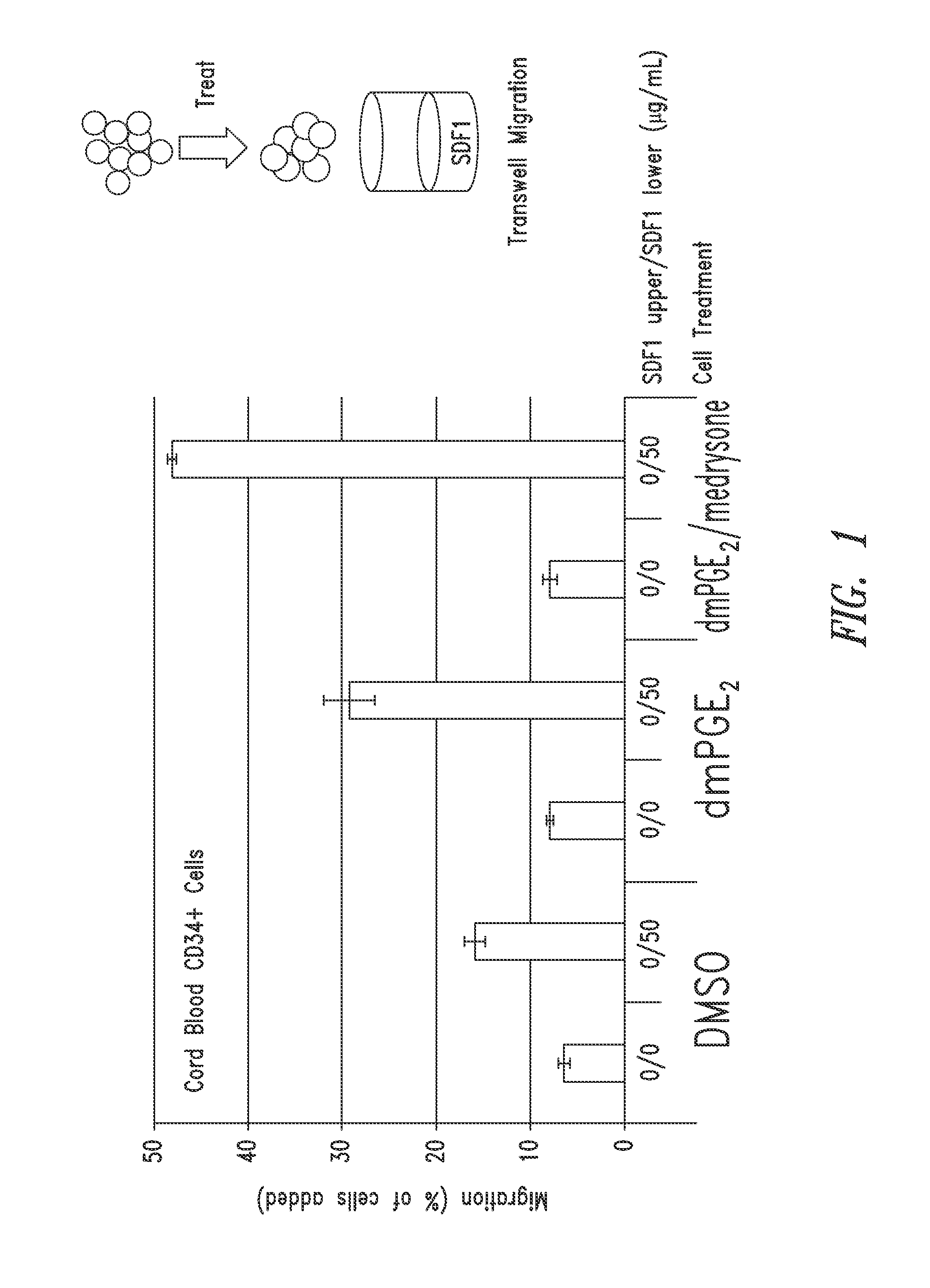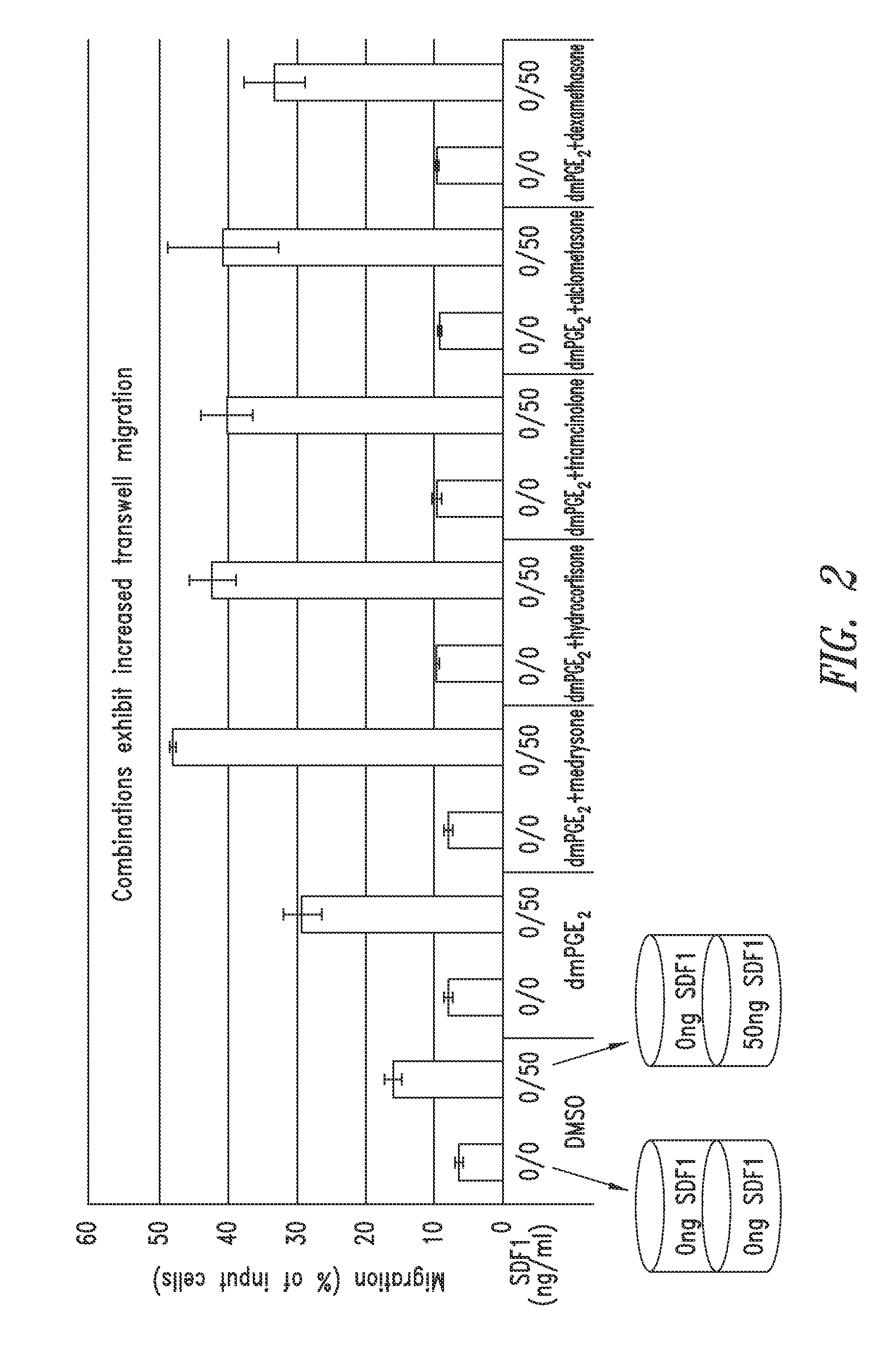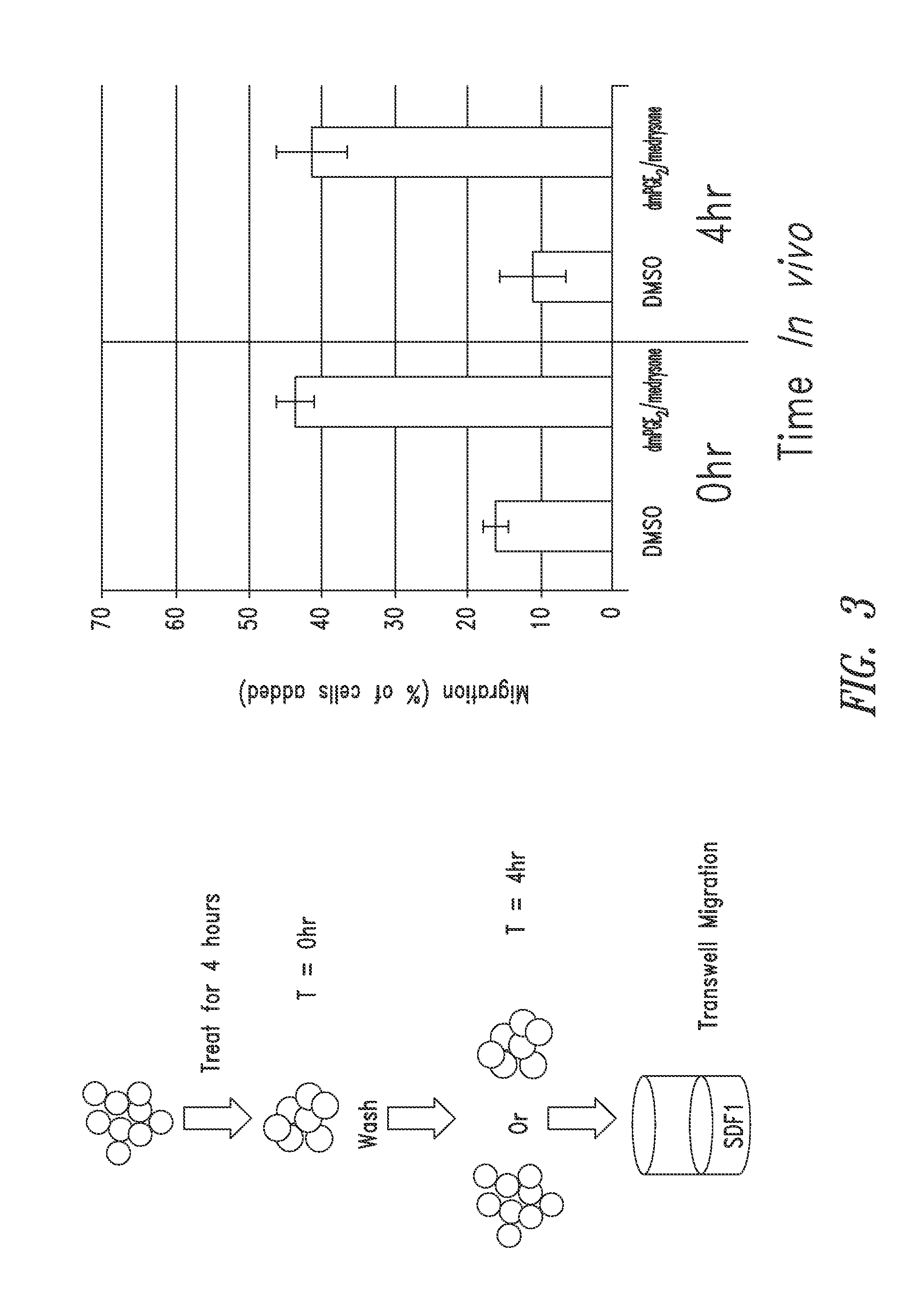Methods of treating ischemia
- Summary
- Abstract
- Description
- Claims
- Application Information
AI Technical Summary
Benefits of technology
Problems solved by technology
Method used
Image
Examples
example 1
SDF-1 Transwell Migration Assays
Methods
[0268]Transwell migration assays were performed using 96-well chemotaxis chambers, 5 μM pore size polycarbonate membrane (Corning Inc., Corning, N.Y.) in accordance with manufacturer's instructions. Briefly, CD34+ cells were then treated for 4 hours at 37° C. with 16,16-dimethyl PGE2 (dmPGE2), dmPGE2 and glucocorticoid, or DMSO control at a concentration of 10 μM in StemSpan® media (StemCell Technology, Vancouver, Canada). The cells were then washed by centrifugation (300 g for 10 minutes) and resuspended in transwell assay buffer (Phenol Red Free RPMI media (Mediatech), 0.5% lipid free BSA (Sigma-Aldrich) at a concentration of 40,000-60,000 cells / 750.
[0269]To test the duration of the treatment effects, one portion of treated cells was washed by centrifugation (300 g for 10 minutes) and resuspended in StemSpan® media for 4 hours at 37° C. without dmPGE2, glucocorticoids, or DMSO and then washed again by centrifugation (300 g for 10 minutes) and...
example 2
PGE2 and PGE2 / Glucocorticoid Treated HSPCs Improve Neurological and Locomotor Function in a Rat Ischemia Model
Methods
[0274]Adult male Wistar rats were subjected to a transient focal ischemia by blocking the right middle cerebral artery MCAO model (Middle Cerebral Artery Occlusion). A surgical nylon suture with a rounded tip was advanced from the external carotid artery into the lumen of the internal carotid artery until it blocked the origin of the middle cerebral artery. After 2 hours, the suture was withdrawn to allow reperfusion. One day after reperfusion, rats were injected via tail vein with either Hanks Balanced Salt Solution (HBSS), DMSO-treated HSPCs, or HSPCs treated with dmPGE2 and medrysone. A phosphodiesterase type 4 inhibitor (YM976) was also included to increase the durability of the enhanced cell effect. Our work demonstrates that PDE4 inhibitors do not significantly change the properties of the enhanced cell. Cells were incubated with compound or DMSO in culture medi...
example 3
Methods
[0280]Isolation of Lin(−)CD34+ Cells from Treated Whole Cord Blood
[0281]Human whole cord blood mononuclear cells were obtained from Stem Cell Technologies (Vancouver, Canada). Upon thawing, the cells were treated with 16,16-dimethyl PGE2 or appropriate controls, e.g., DMSO, in LMD / 5% HSA medium.
[0282]After treatment, the cells were washed with LMD / 5% HSA medium, centrifuged for 10 minutes at 650×g at room temperature and resuspended in a cold selection buffer (phosphate buffered saline (PBS) with no Ca+ or Mg+; 2 mM EDTA; and 0.5% HSA). Magnetic selection was performed using the Lineage (Lin) Depletion Kit (Miltenyi Biotec, CA) followed by a CD34+ enrichment kit (Miltenyi Biotec). Lineage depletion and CD34+ cell enrichment were performed according to manufacturer's instructions using a QuadroMACS™ separator. During this process, the cells were kept at 4° C. Once the Lin-CD34+ cells were isolated from the treated whole cord blood, an aliquot was analyzed by flow cytometry to ...
PUM
 Login to View More
Login to View More Abstract
Description
Claims
Application Information
 Login to View More
Login to View More - R&D
- Intellectual Property
- Life Sciences
- Materials
- Tech Scout
- Unparalleled Data Quality
- Higher Quality Content
- 60% Fewer Hallucinations
Browse by: Latest US Patents, China's latest patents, Technical Efficacy Thesaurus, Application Domain, Technology Topic, Popular Technical Reports.
© 2025 PatSnap. All rights reserved.Legal|Privacy policy|Modern Slavery Act Transparency Statement|Sitemap|About US| Contact US: help@patsnap.com



